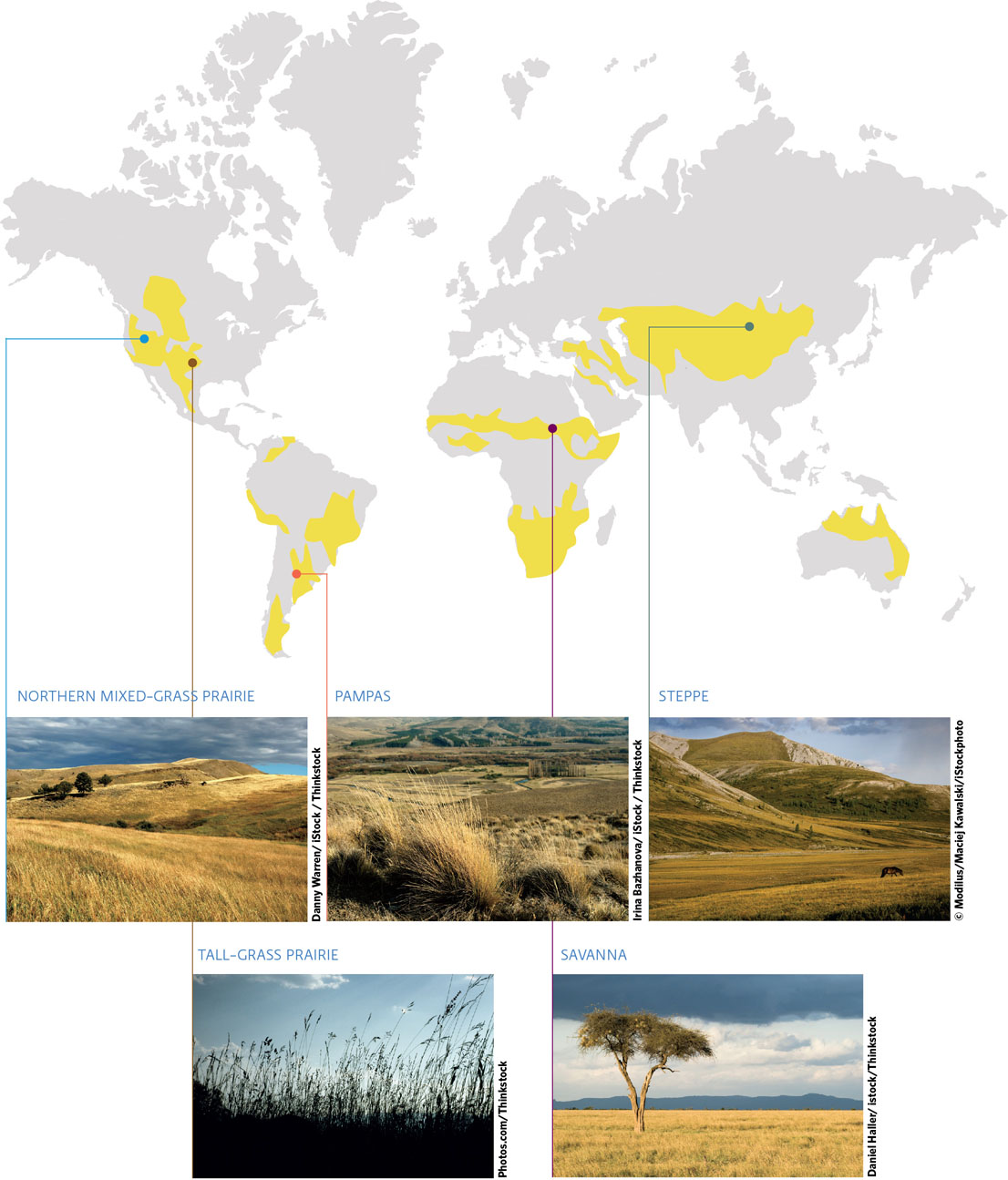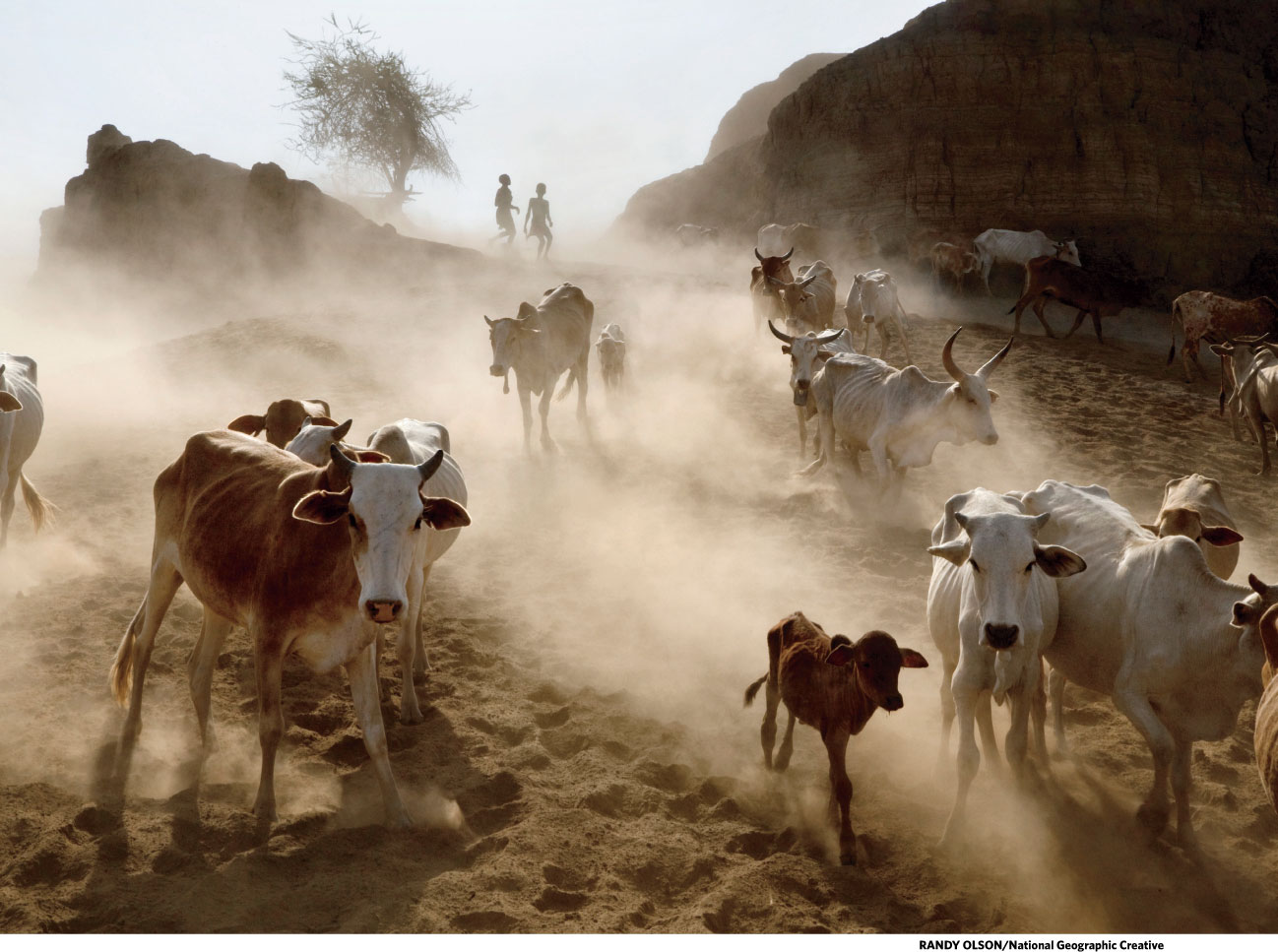The presence and type of grassland biome is determined by abiotic and biotic factors.
KEY CONCEPT 27.1
Grasslands are found in areas with enough rain to support the growth of grasses but not trees; they also occur in areas of higher rainfall that experience fire or herbivore pressure.
Grasslands are biomes that receive enough rainfall to support grass and herbaceous plants but not enough to support forests. They may also be found in regions where rainfall is plentiful but larger plants are kept in check by periodic fires or herds of grazing herbivores. Broadly, there are several different types: tropical grasslands, also known as savannas, occur in places that have both rainy and dry seasons but are warm year-round. Cold grasslands like steppes are, as the name suggests, cold most of the year, and are characterized by a very short growing season and ultrathin layers of soil. The Great Plains—which lies between the Mississippi River and the Rocky Mountains and stretches from the south of Texas into Canada—is temperate grassland. These grasslands, known as prairies, contain many species of plants, have thick soils, and have a truly seasonal climate, with cold winters and hot summers. INFOGRAPHIC 27.1
grassland
A biome that is predominately grasses, due to low rainfall, grazing animals, and/or fire.
Grasslands are found on every continent except Antarctica. The examples of grasslands shown here vary based on climate.

Danny Warren/iStock/Thinkstock
Irina Bazhanova/iStock/Thinkstock
© Modilus/Maciej Kawalski/iStockphoto
Photos.com/Thinkstock
Daniel Haller/istock/Thinkstock

What do you predict will happen in a grassland biome that begins to receive more or less precipitation than normal, due to climate change? (Hint: See Infographic 8.4.)
A grassland that receives more rain may transition to Mediterranean scrub or temperate forest; a grassland that receives less might transition to desert or tropical scrub. But since fire and herbivores also play a role in maintaining an area as a grassland, the presence of more rain will not necessarily produce this change.
